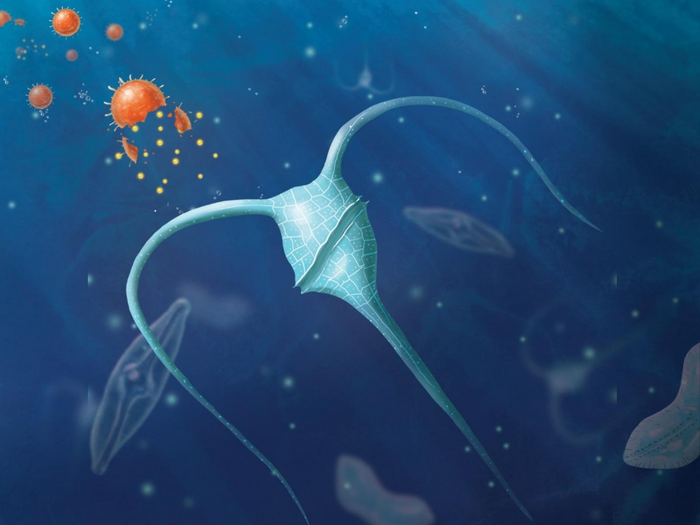The urgent need to remove excess carbon dioxide from the Earth’s environment is motivating scientists to innovate new solutions. One idea is known as artificial ocean fertilization (AOF) which aims to feed phytoplankton, and stimulate their growth in the ocean. More phytoplankton means more carbon sequestration. However, the process is limited by low bioavailability of added nutrients and the challenge of AOF-produced biomass reaching the deep ocean.
Now, a group of researchers is exploring the potential application of engineered nanoparticles (ENPs) to overcome these issues. ENPs are thought to enhance phytoplankton growth at concentrations below those likely to be toxic in marine ecosystems. The researchers’ goal is to seed the oceans with iron-rich engineered fertilizer particles near ocean plankton (to feed them) and encourage growth and carbon dioxide (CO2) uptake.
This work is published in Nature Nanotechnology in the paper, “Potential use of engineered nanoparticles in ocean fertilization for large-scale atmospheric carbon dioxide removal.”

In nature, nutrients from the land reach oceans through rivers and blowing dust to fertilize plankton. The research team proposes moving this natural process one step further to help remove excess CO2 through the ocean.
“The idea is to augment existing processes,” said Michael Hochella, PhD, a laboratory fellow in the department of energy’s Pacific Northwest National Laboratory. “Humans have fertilized the land to grow crops for centuries. We can learn to fertilize the oceans responsibly.”
Previous evidence suggests that adding specific combinations of carefully engineered materials could effectively fertilize the oceans, encouraging phytoplankton to act as a carbon sink. The organisms would take up carbon in large quantities. Then, as they die, they would sink deep into the ocean, taking the excess carbon with them. Scientists say this proposed fertilization would simply speed up a natural process that already safely sequesters carbon in a form that could remove it from the atmosphere for thousands of years.
“At this point, time is of the essence,” said Hochella. “To combat rising temperatures, we must decrease CO2 levels on a global scale. Examining all our options, including using the oceans as a CO2 sink, gives us the best chance of cooling the planet.”
The researchers argue that engineered nanoparticles offer several attractive attributes. They could be highly controlled and specifically tuned for different ocean environments. Surface coatings could help the particles attach to plankton. Some particles also have light-absorbing properties, allowing plankton to consume and use more CO2. The general approach could also be tuned to meet the needs of specific ocean environments. For example, one region might benefit most from iron-based particles, while silicon-based particles may be most effective elsewhere, they say.
The researchers’ analysis of 123 published studies showed that numerous non-toxic metal-oxygen materials could safely enhance plankton growth. The stability, Earth abundance, and ease of creation of these materials make them viable options as plankton fertilizers, they argue.
The team also analyzed the cost of creating and distributing different particles. While the process would be substantially more expensive than adding non-engineered materials, it would also be significantly more effective.
More specifically, the authors write that life-cycle assessment and cost analyses suggest that net CO2 capture is possible for iron, SiO2, and Al2O3 ENPs with costs of 2–5 times that of conventional AOF, whereas boosting AOF efficiency by ENPs should substantially enhance net CO2 capture and reduce these costs.



